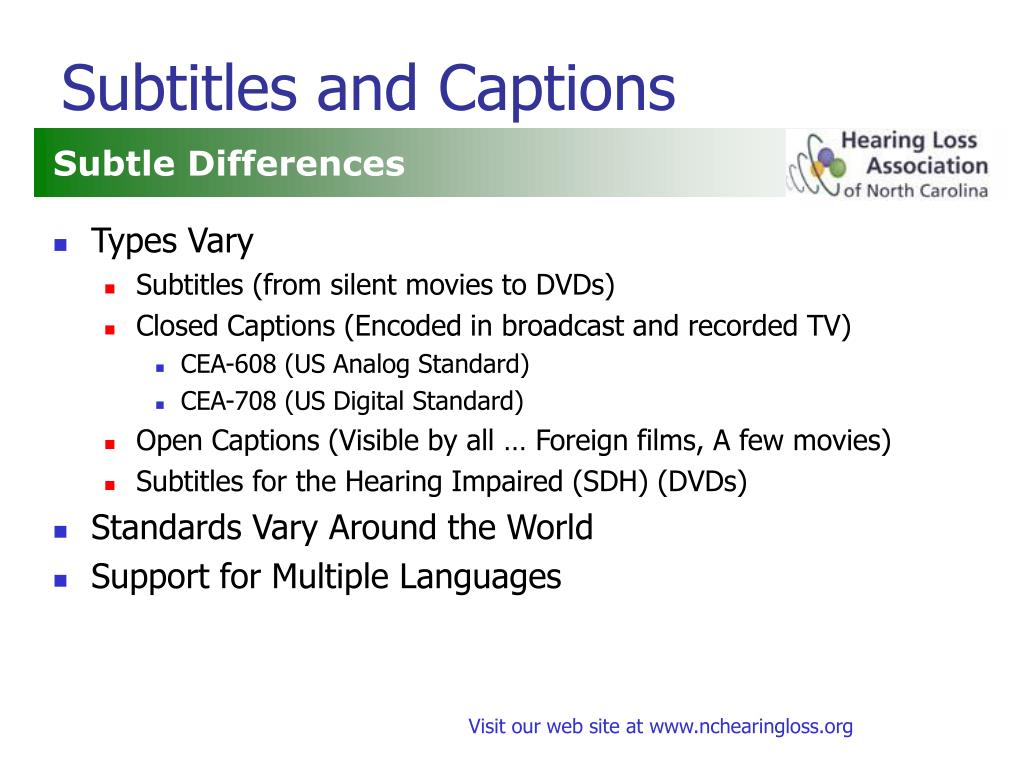

In contrast, subtitles are burned onto a video as an image which displays. They are also known as the formats EIA-608 or CEA-608. Closed captions are encoded into Line-21 of the television signal. They are ‘closed’ which means the viewer has the ability to switch them on or off as required. Closed caption files are created and encoded onto a video stream.

In terms of the method used to include onscreen text with a video, there is a very important difference between and subtitles and closed captions. Encoding Closed Captions and Burning Subtitles Both closed captioning and subtitling are highly effective when used for SEO (search engine optimisation) purposes online. Foreign subtitles are often used for translating video content to appeal to global audiences. Subtitles can be useful for viewers who are deaf or hard or hearing but are not as in-depth in terms of what is included. Closed Captions and Subtitles Intended AudiencesĬlosed captions are intended for viewers who are deaf or hard of hearing. For audiences outside of the subtitling industry, little is known about how subtitling and closed captioning differs but for those working with services for the deaf, subtitle translations, video production, broadcasting and subtitles for video on demand services, the differences can be stark. Understanding the difference between subtitles and closed captions is important because it allows video makers to make the right choice in relation to the audience they are hoping to capture, the results they are looking to achieve and the budget they need to stick to.


 0 kommentar(er)
0 kommentar(er)
